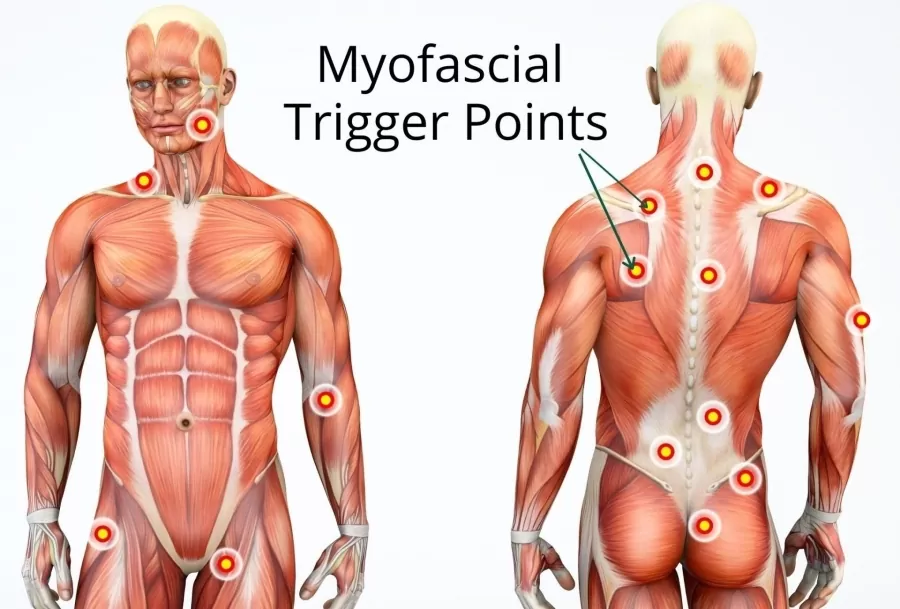
Everyone talks about ‘trigger points’ and different treatments to address them but do you understand what a mysofascial trigger point (MTrP) actually is?
An MTrP is a small area within a taut band of skeletal muscle which, when stimulated via stretch or pressure, can reproduce pain at the site of the trigger point and possibly within a recurrent referral pattern. These key features are important in diagnosing an MTrP.
Classification of MTrPs can be divided into active and latent. A trigger point is active when there is the reproduction of familiar referred or localised pain at rest or when mechanically stimulated. A latent trigger point on the other hand is what a physiotherapist will call clinically silent. This means this trigger point will generally only reproduce its typical symptoms with strong manual stimulation and may or may not cause symptoms which are familiar to you. Sometimes distinguishing between the two – active and latent – can be tricky.
When it comes to explaining the WHY MTrPs occur in the muscle, let’s just say it’s believed to have something to do with neurons and action potentials, opening and closing of channels, calcium and acetyclcholine – sounds complex right!? Let’s put it like this. If you continue to overload your muscles, repetitively apply strain to your muscles or even experience direct trauma to your muscles, you will generally develop MTrPs in your muscles.
So, if we avoid active overuse of our muscles then we avoid developing MTrPs? That sounds simple. But, with labour intensive jobs, the drive to remain physically active and just the chores around the house it is difficult to ensure we are not causing strain or overload to our muscles.
The question then is, how do we treat them? Continue reading my next blog to find out about one of the techniques we use at Healthproof to treat MTrPs.

